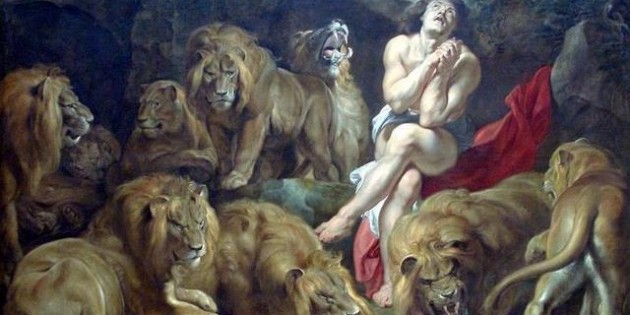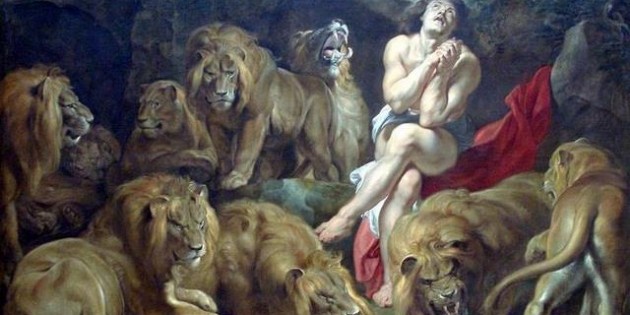The prophet Daniel, as chief counselor to the Persian king Darius, aroused the envy of the other royal ministers. Conspiring against the young Hebrew, they forced the king into condemning Daniel to a den of lions. The following dawn Darius, anxious about his friend, had the stone that sealed the entrance rolled away to discover Daniel had been miraculously saved. Rubens depicted this deliverance when, as the beasts squint and yawn at the morning light streaming into their lair, Daniel gives thanks to his God.
The monumental size of the ten lions and their placement close to the viewer heighten the sense of immediacy. Within the asymmetrical, baroque design, Daniel is the focal point even though his position is off-center. Against the brown tones of animals and rocks, his pale flesh is accented by his red and white robes as well as by the blue sky and green vines overhead.
Excerpted from National Gallery of Art
Sir Peter Paul Rubens (June 28, 1577 – May 30, 1640) was a Flemish Baroque painter. A proponent of an extravagant Baroque style that emphasized movement, colour, and sensuality, Rubens is well known for his Counter-Reformation altarpieces, portraits, landscapes, and history paintings of mythological and allegorical subjects.
In addition to running a large studio in Antwerp that produced paintings popular with nobility and art collectors throughout Europe, Rubens was a classically educated humanist scholar and diplomat who was knighted by both Philip IV of Spain and Charles I of England.
Rubens worked on this painting during the years 1613-1615. The painting is currently in the collection of the National Gallery of Art, Washington, D.C.
See also:

